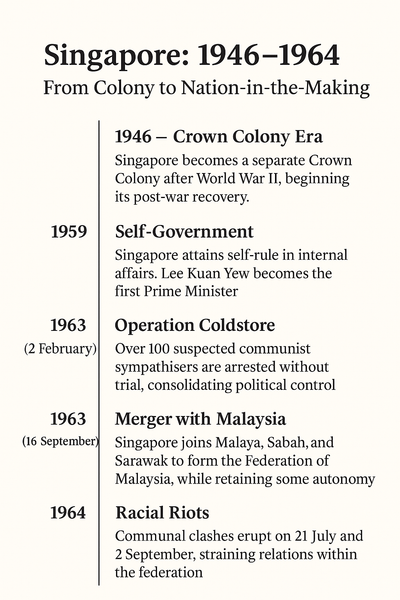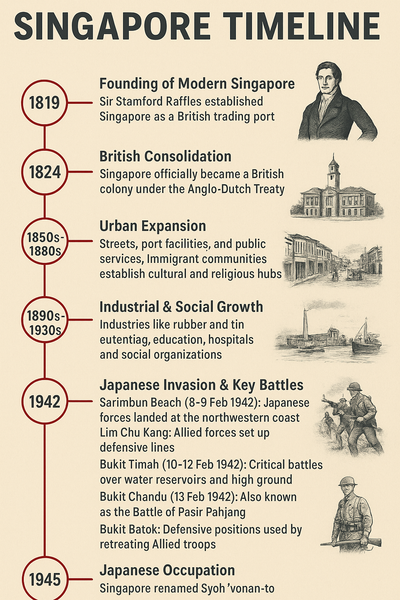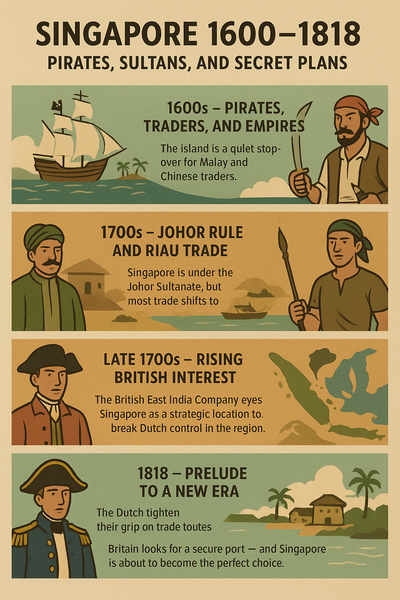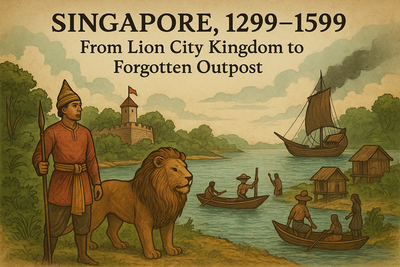From 1946 to 1964, Singapore transitioned from a British Crown Colony to self-government under Lee Kuan Yew. The 1963 Operation Coldstore strengthened political control, followed by Singapore’s merger with Malaysia later that year. However, racial riots in 1964 and mounting political tensions highlighted deep divisions, setting the stage for eventual independence.
Read MoreJourney Through Singapore’s Past
From Raffles’ founding of a British trading port in 1819 to Japanese occupation in 1942–45, Singapore transformed into a bustling, multicultural city and strategic hub, shaped by trade, migration, industry, and war.
Read MoreFrom a quiet trading stop to a strategic gateway, Singapore in 1600–1818 saw local villages, pepper plantations, and passing traders shaping its early identity—setting the stage for Raffles’ arrival and the island’s transformation into a global port
Read MoreFrom its founding by Sang Nila Utama in 1299, Singapore grew into a bustling trading port attracting regional merchants, weathered political struggles and pirate raids, and remained an important maritime stop even as nearby Malacca rose to prominence and the Portuguese controlled regional trade
Read More


